Hello, and welcome back to Reflections on Investing with the Cornell Capital Group. It's been a while since we joined you, and I think we have a particularly interesting session today.
To get motivated, let's go back to January 1st of 2019. At that time, the S&P 500 was at 2,485. Last Friday, September 13th, it closed at 5,626—up 126%. That's a big gain, even over four and a half years. So, what drove that gain?
Well, if you think in the simplest terms, the index can go up either because the earnings of the underlying companies went up, or because the price that the market was willing to pay for each dollar of earnings increased—in other words, the multiples expanded. We've talked about the multiples in the past, and we'll talk about them again in future Reflections, but for now, we want to focus on the earnings themselves, which are the basic driver of value in the stock market. Ultimately, for stocks to have value, the underlying companies have to have profits.
So, to get started, let's go to the iPad and look at some data.
Our first chart shows the ratio of earnings before interest and taxes for all non-financial American corporations, divided by GDP. If we look at that, the earnings number is quite variable—it's higher during good times, worse during bad times. But if we look at the current time, the ratio of profit (earnings before interest and taxes) to GDP is about the long-run average. Well, that's not going to explain why the last few years have been so good for common stocks.
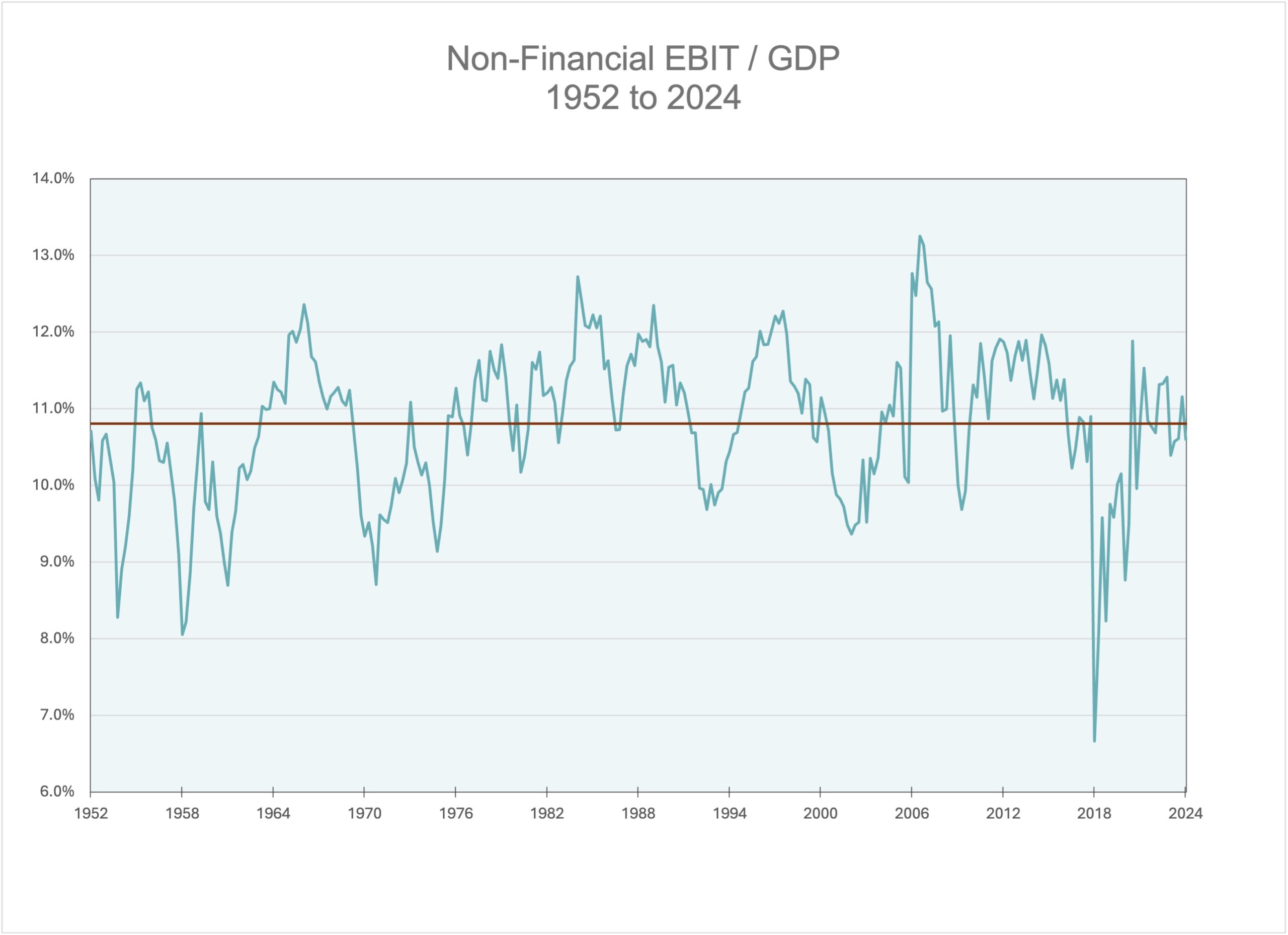
But also, let me stress: this is earnings before interest and taxes. That's not what really matters for stock prices, because companies have to pay the interest, and they have to pay the taxes. What matters is corporate profit after interest and taxes. So, let's take a look at that. Incidentally, all this data is from the United States Federal Reserve.
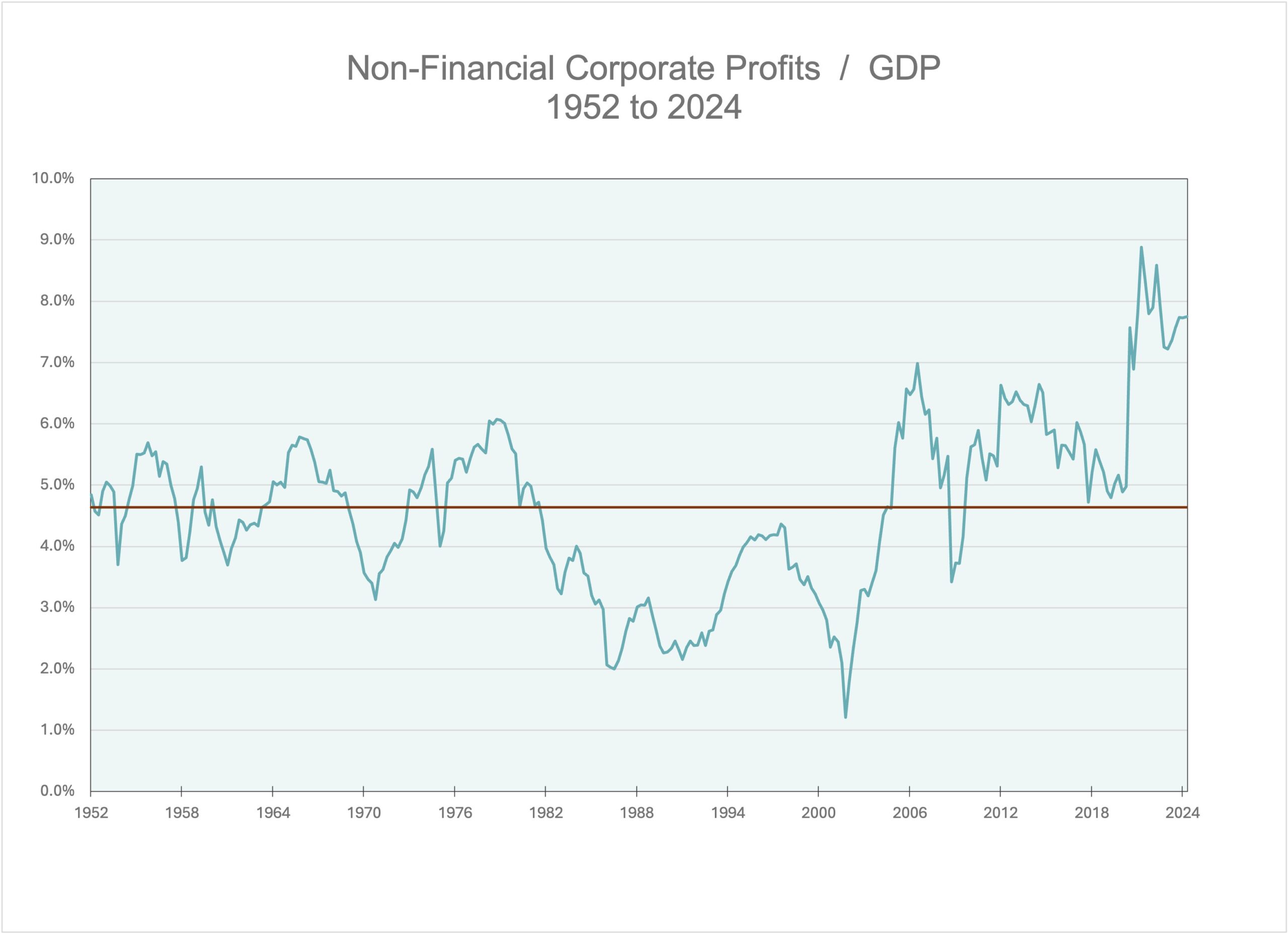
Here, you can see that in the recent period, the corporate profits of non-financial corporations have exploded above the average, even though the earnings before interest and taxes have not. It's a bit of a mystery, and we're going to get to that in a second. But I wanted to show that it's not unique to non-financial corporations.
The reason I use non-financial corporations in these first two charts is that when you talk about financial companies, the interest component is very complicated because they have all sorts of borrowing and lending and so forth. So, the Fed breaks out non-financial and financial corporations and doesn't report earnings before interest and taxes for non-financial companies. But they do report total profits for financial companies. So, let's look at that, and you'll see that adding the financial companies doesn't change the basic picture. The recent period is extraordinary—total corporate profits are far higher than average in recent years.
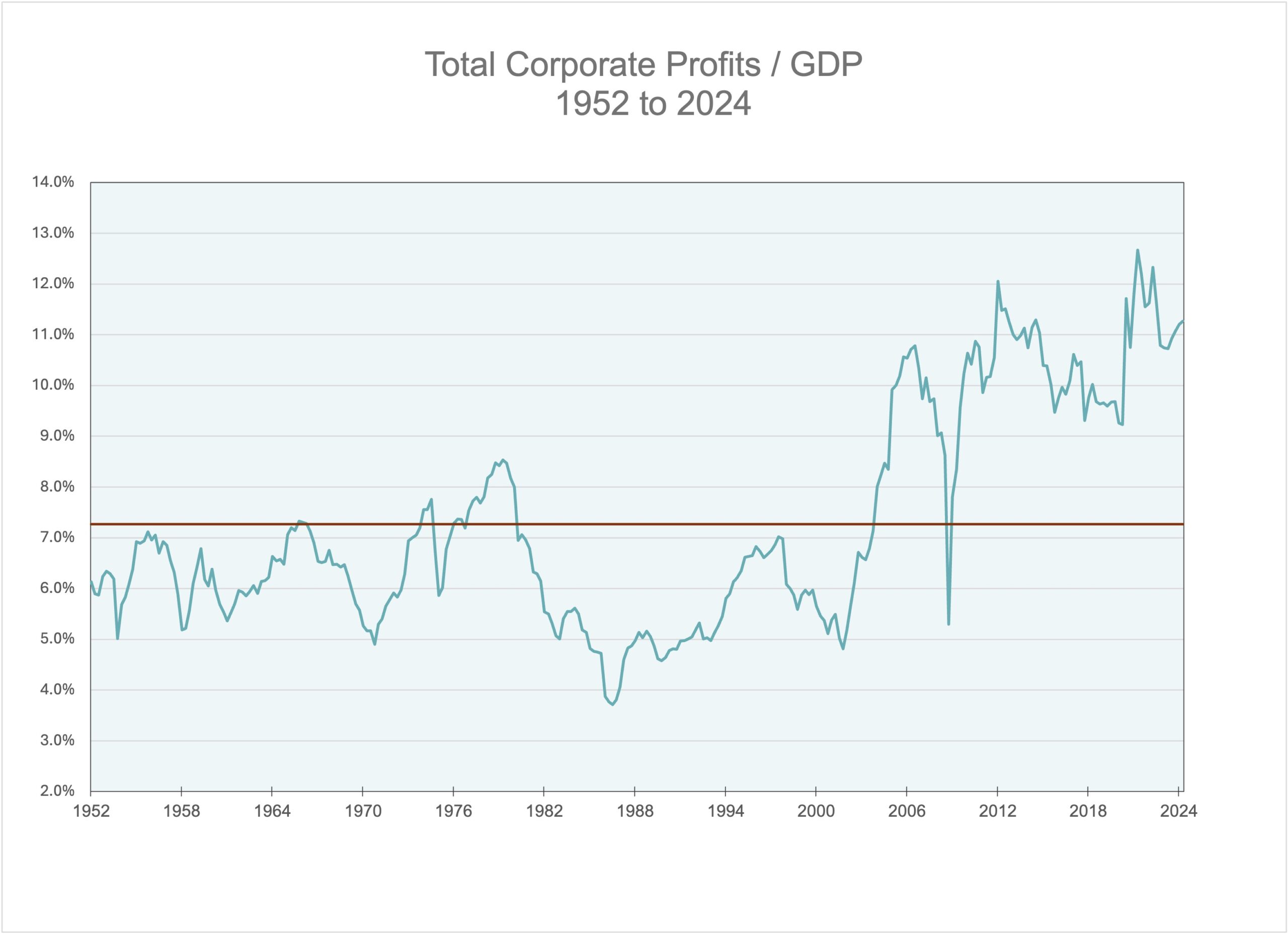
So, how do we explain this? How can earnings before interest and taxes be stuck at the average, whereas profits after tax are far above the average? The answer must be related to interest and taxes.
So, let's start with interest. This chart shows the yield on the 10-year government bond over the period from 1962 to 2024. Notice that during the current period, interest rates were extraordinarily low relative to the historical sample. So, corporate profits were boosted a great deal by low interest costs. But at the very end here, with the recent Fed tightening and the improvement in the economy, interest rates have risen. This is unlikely to be much of a driver going forward, but it does explain the explosion in corporate profits more recently.
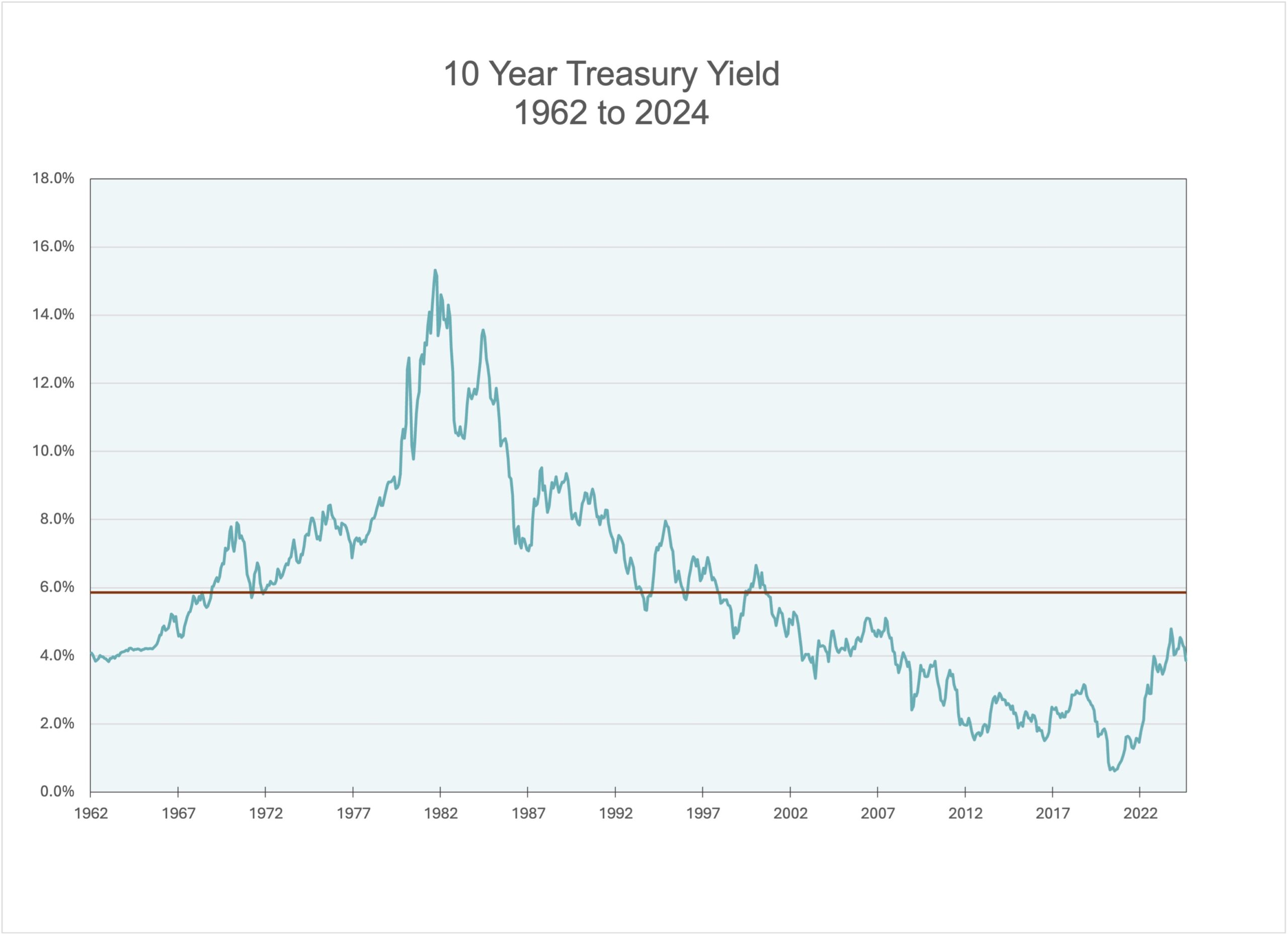
The other element is taxes, and that's shown in this chart in two ways. The red line is the headline tax rate—the stated federal corporate tax rate—which is currently 21%. But the Biden administration definitely wants to raise that, and Vice President Harris is on board. If she's elected, that rate will go up. The blue line is the effective rate, because companies don't often pay the actual stated rate—the effective tax rate tends to be less. But either way, you can see that recently, corporate taxes have been extraordinarily low by historical standards.
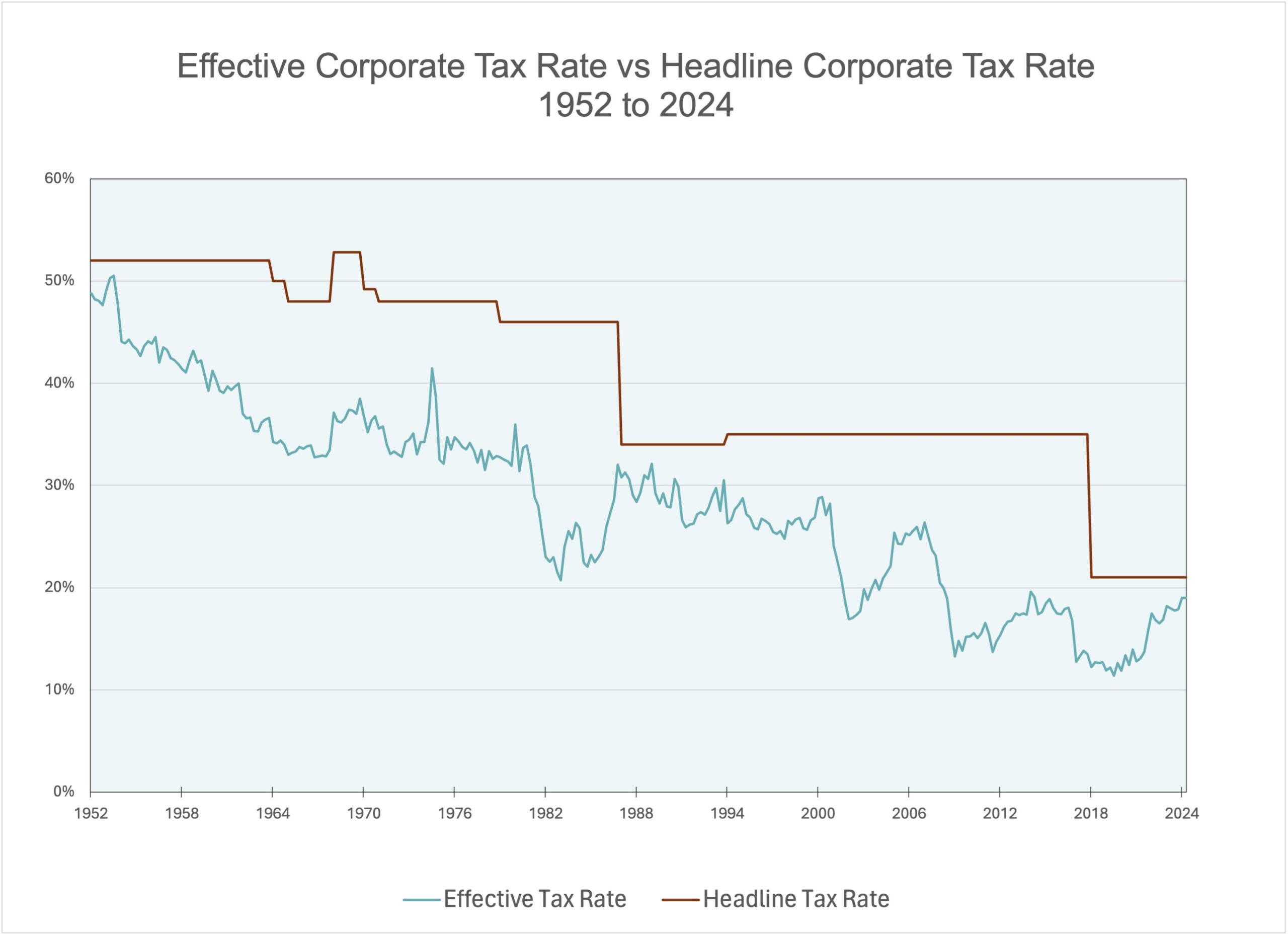
So, what has driven corporate profits during this period following 2019 has not been companies making larger operating profits, but companies paying lower interest and lower corporate taxes.
Now, the reason that's important is going ahead—can we expect them to pay... if the market is going to be pushed higher, interest rates have to fall, and taxes have to fall. From current levels, that seems extraordinarily unlikely. And here's a big reason: the federal deficit and the federal debt.
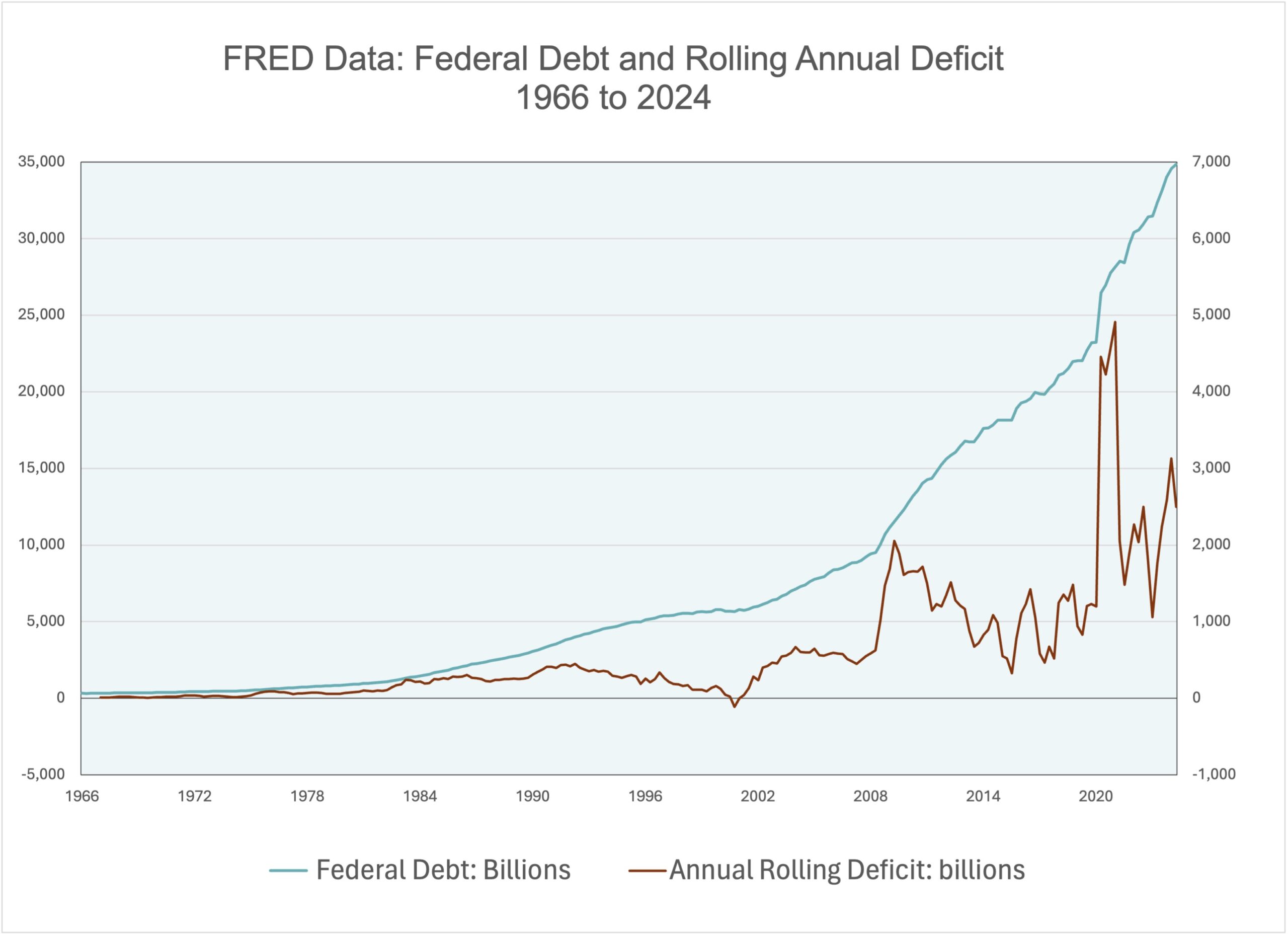
The final chart shows this. The blue line shows the federal debt, which has risen to $35 trillion. At that level, the interest on the debt is going to be a trillion dollars—greater than the defense budget or Medicare spending. The red line shows the deficits. Notice the deficits were small for many years, and during the Clinton administration, there was even a surplus in one year. But recently, they've exploded, and they're running around $2 trillion. With the government required to borrow that much, it seems very unlikely that interest rates are going to come down much. It also seems likely that the government is going to look under the couch for added tax money.
In light of the low corporate taxes I showed you earlier, and in light of the fact that they're a political target, corporate taxes are almost certain to rise. So, the two factors that have driven up stock prices from an earnings perspective so much in the last four and a half years—low interest rates and low taxes—both seem to be going away.
If that's the case, then investment decisions should reflect the fact that the future is not likely to be as bullish as the past. So, we think this is something that you, as investors, are going to want to take a very careful look at.
This has been Reflections on Investing with the Cornell Capital Group.
